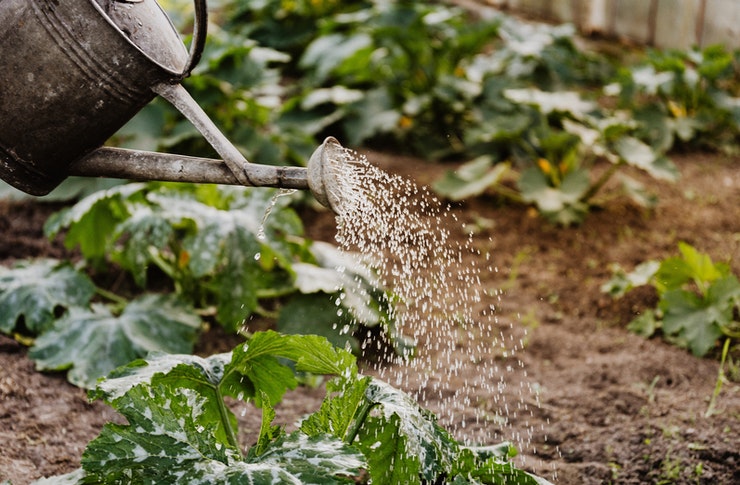The Secret to a Thriving Garden: Tips for Success
A garden is more than just a patch of land; it's a living canvas that can transform your outdoor space into a vibrant oasis. Whether you're a seasoned gardener or a novice with a newfound interest, creating and maintaining a thriving garden can be a rewarding experience. This article will explore the essential elements of successful gardening, from soil preparation to plant selection and ongoing care.

Soil quality is another critical element. Healthy soil provides the necessary nutrients and structure for plants to grow strong roots and flourish. Before planting, it’s important to assess your soil type and pH level, making amendments as needed to create an optimal growing environment.
Lastly, selecting the right plants for your specific climate and garden conditions is vital. Consider factors such as hardiness zones, water requirements, and mature plant sizes when choosing your garden’s inhabitants.
How can you prepare your soil for optimal plant growth?
Soil preparation is a crucial step in creating a thriving garden. Start by removing any weeds, rocks, or debris from the area. Then, test your soil’s pH and nutrient levels using a home testing kit or by sending a sample to a local extension office. Based on the results, you can add amendments to balance the pH and enrich the soil.
Organic matter, such as compost or well-rotted manure, can significantly improve soil structure and fertility. Work these materials into the top 6-8 inches of soil, along with any necessary pH adjusters like lime (to raise pH) or sulfur (to lower pH). For heavy clay soils, adding sand or gypsum can improve drainage, while sandy soils benefit from additional organic matter to improve water retention.
What are the best practices for watering and fertilizing your garden?
Proper watering is essential for plant health. As a general rule, it’s better to water deeply and less frequently, encouraging roots to grow deeper and making plants more resilient to drought. Water early in the morning to minimize evaporation and allow foliage to dry before nightfall, reducing the risk of fungal diseases.
When it comes to fertilizing, a balanced approach is key. Over-fertilizing can lead to excessive foliage growth at the expense of flowers or fruits, and may even harm plants. Start with a soil test to determine what nutrients your garden needs. Slow-release fertilizers or organic options like compost tea can provide steady nutrition throughout the growing season.
How do you choose the right plants for your garden?
Selecting the right plants for your garden involves considering several factors. First, determine your USDA hardiness zone, which will guide you in choosing plants that can survive your local climate. Next, assess the light conditions in your garden, as different plants have varying sunlight requirements.
Consider the mature size of plants to ensure they have enough space to grow without overcrowding. Group plants with similar water and soil needs together for easier maintenance. Native plants are often an excellent choice, as they are adapted to local conditions and tend to be low-maintenance.
Don’t forget to include a mix of plants that bloom at different times to ensure year-round interest in your garden. Combining perennials, which return year after year, with annuals that provide bursts of color can create a dynamic and ever-changing garden landscape.
What are effective strategies for pest and disease control?
Maintaining a healthy garden often means dealing with pests and diseases. The first line of defense is prevention. Keep your garden clean by removing dead or diseased plant material promptly. Encourage beneficial insects like ladybugs and praying mantises, which naturally control pest populations.
When pests do appear, start with the least toxic methods of control. Hand-picking larger pests, using insecticidal soaps, or applying neem oil can be effective against many common garden pests. For fungal diseases, proper spacing to improve air circulation and avoiding overhead watering can help prevent outbreaks.
What are some popular garden styles and their key features?
Gardens come in various styles, each with its unique characteristics and appeal. Here’s a comparison of some popular garden styles:
| Garden Style | Key Features | Best Suited For |
|---|---|---|
| Cottage | Informal, mixed plantings, abundant flowers | Small spaces, romantic aesthetics |
| Japanese | Minimalist, focuses on balance and harmony | Meditation spaces, small yards |
| Mediterranean | Drought-tolerant plants, hardscaping | Hot, dry climates |
| Formal | Symmetrical design, manicured plants | Large spaces, classic aesthetics |
| Wildlife | Native plants, water features, natural look | Nature lovers, eco-conscious gardeners |
Prices, rates, or cost estimates mentioned in this article are based on the latest available information but may change over time. Independent research is advised before making financial decisions.
Creating a thriving garden is an ongoing process that requires patience, knowledge, and care. By understanding the key elements of successful gardening, preparing your soil properly, choosing the right plants, and maintaining your garden with appropriate watering, fertilizing, and pest control strategies, you can create a beautiful and rewarding outdoor space. Whether you prefer a formal garden with structured lines or a wild, naturalistic approach, there’s a garden style to suit every taste and environment. With dedication and the right techniques, your garden can become a flourishing sanctuary that brings joy and beauty to your home for years to come.






